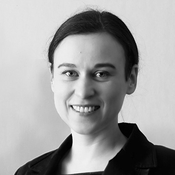Theoretical seminar | 08 February 2023
Online

The major task of detecting axions or axion-like particles has two challenges. On the one hand, the ultimate sensitivity is required, down to the energy of a single microwave photon of the yoctojoule range. On the other hand, since the detected events are supposed to be rare, the dark count rate of the detector must be extremely low. We experimentally test the applicability of an aluminium Josephson junctions as a single photon counter in the microwave frequency range. We have measured the switching from the superconducting to the resistive state through the absorption of 10 GHz photons. The dependence of the switching probability on the signal power suggests that the switching is initiated by the simultaneous absorption of three and more photons, with a dark count time above 0.01 s.
1) 1. Leonid S. Kuzmin , Alexander S. Sobolev, Claudio Gatti , Daniele Di Gioacchino , Nicolo Crescini ` , Anna Gordeeva, and Eudeni Il’ichev
Single Photon Counter Based on a Josephson Junction at 14 GHz for Searching Galactic Axions
IEEE Transactions On Applied Superconductivity, VOL. 28, NO. 7, OCTOBER 2400505 (2018)
2) A. L. Pankratov, L. S. Revin, A. V. Gordeeva, A. A. Yablokov, L. S. Kuzmin, E. Il’ichev, Towards a microwave single-photon counter for searching axions, npj Quantum Information 8 (2022).
https://www.nature.com/articles/s41534-022-00569-5
3) Andrey L. Pankratov, Anna V. Gordeeva, Leonid S. Revin, Dmitry A. Ladeynov, Anton A. Yablokov and Leonid S. Kuzmin,
Approaching microwave photon sensitivity with Al Josephson junctions
Beilstein J. Nanotechnol. 2022, 13, 582–589.
https://doi.org/10.3762/bjnano.13.50
